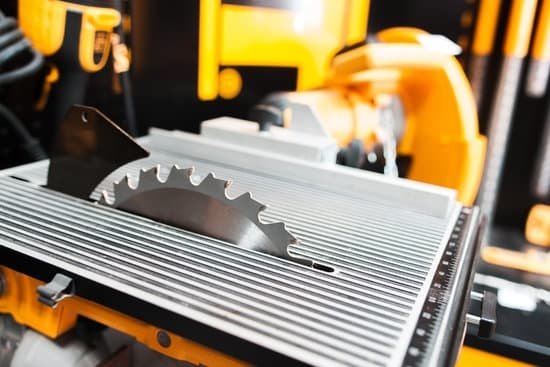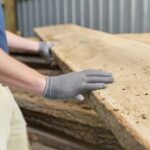Choosing the right woodworking machinery is crucial for achieving optimal results in any woodworking project. Woodworking machinery plays a significant role in shaping, cutting, and finishing wood materials efficiently and accurately. The question of which woodworking machinery is better often arises among woodworkers, whether professional or hobbyists, seeking to enhance their craft.
Woodworking machinery encompasses a variety of tools and equipment, such as saws, routers, planers, and jointers, each serving specific functions in the woodworking process. These machines can vary in power sources – from electric-powered machinery to manual hand tools. The choice between the two depends on the type of projects being undertaken and individual preferences for ease of use and convenience.
When considering woodworking machinery options, factors like precision, accuracy, durability, quality, efficiency, and speed are essential. Machines that provide precise cuts and measurements contribute to the overall quality of the finished product. Durability and quality are vital for long-term use and reliability in woodworking tasks. Additionally, efficient machinery can significantly impact productivity in the workshop by streamlining processes and reducing time spent on repetitive tasks.
Types of Woodworking Machinery
Woodworking machinery plays a crucial role in the efficiency and quality of woodworking projects. When considering which woodworking machinery is better suited for your needs, it is important to understand the different types available in the market. Saws, routers, planers, and jointers are among the most common types of woodworking machinery used in workshops. Each type serves a specific purpose and offers unique capabilities that can greatly impact the outcome of your projects.
Saws
Saws are essential tools in any woodworking shop, as they are used to make precise cuts in various materials. Circular saws, miter saws, table saws, band saws, and jigsaws are some of the popular types of saws used by woodworkers.
The choice of saw depends on the size of material you are working with and the type of cut you need to make. For instance, a table saw is ideal for making straight cuts on large wooden panels, while a miter saw excels at making angled cuts for frame assemblies.
Routers
Routers are versatile tools that are used for shaping edges, making grooves, and creating intricate designs on wood surfaces. There are two main types of routers – hand-held routers and table-mounted routers.
Hand-held routers offer more flexibility and maneuverability for intricate tasks, while table-mounted routers provide stability and accuracy for larger projects. Routers come with different horsepower ratings and features such as variable speed controls which allow woodworkers to customize their cutting operations according to their specific requirements.
Planers and Jointers
Planers are used to create smooth and uniform thickness on wooden boards by removing imperfections and leveling the surface. Jointers, on the other hand, are designed to flatten one face of a board before it is fed into a planer for thicknessing.
Both planers and jointers play an important role in preparing lumber for further processing or assembly. Investing in high-quality planers and jointers ensures that your wood pieces are accurately sized and have clean surfaces for seamless joining or finishing purposes.
Power Source
When it comes to choosing woodworking machinery, one of the key decisions to make is whether to opt for electric-powered tools or manual hand tools. Each type of power source has its own benefits and drawbacks, which can significantly impact the overall woodworking process.
Electric-Powered Machinery
Electric-powered woodworking machinery offers a higher level of convenience and efficiency compared to manual hand tools. With electric saws, routers, planers, and jointers, woodworkers can achieve faster results with less physical effort. These machines are often equipped with features such as adjustable speed settings and automatic blade adjustments, which help in achieving precision and accuracy in cuts and measurements.
One major advantage of electric-powered machinery is the consistent power output they provide, ensuring uniform cuts even through dense hardwoods. Additionally, these machines are ideal for large-scale projects where speed and efficiency are crucial. However, it is important to note that they may require a stable power source or access to electricity, which could limit their portability in certain scenarios.
Manual Hand Tools
On the other hand, manual hand tools have their own unique advantages that appeal to some woodworkers. While they may require more physical exertion and time compared to electric-powered machinery, manual tools offer greater control over the woodworking process. Hand planes and chisels allow for meticulous detailing work that may be challenging to achieve with power tools.
Furthermore, manual hand tools do not rely on electricity or batteries, making them ideal for on-site jobs or situations where a power source may not be readily available. This makes them more versatile in certain woodworking environments.
However, their slower pace of work may not be suitable for high-volume production or rapid project completion timelines. Ultimately, the choice between electric-powered machinery and manual hand tools depends on individual preferences, project requirements, and budget constraints when determining which woodworking machinery is better suited for specific needs.
Precision and Accuracy
In addition to choosing the right type of woodworking machinery, it is also important to consider factors such as the quality of materials used in construction and the calibration process. High-quality machinery with precise calibration mechanisms will ensure consistency in cuts and measurements, resulting in professional-looking finished products. Investing in well-built machines that prioritize precision and accuracy may require a higher initial cost, but it can save time and reduce material waste in the long run.
Furthermore, modern advancements in technology have led to the development of computer numerical control (CNC) machines that offer unparalleled precision and accuracy in woodworking. CNC routers, mills, and lathes allow for intricate detailing and complex shapes with minimal margin for error.
While these machines come with a higher price tag compared to traditional woodworking machinery, they can significantly improve efficiency and produce high-quality results consistently. Ultimately, choosing woodworking machinery that prioritizes precision and accuracy will elevate your craftsmanship and set you up for success in your woodworking endeavors.
| Advantages | Disadvantages |
|---|---|
| Precision Cuts | Higher Initial Cost |
| Consistent Measurements | Requires Maintenance |
| Professional Finishing | Learning Curve for CNC Machinery |
Durability and Quality
When it comes to woodworking machinery, durability and quality play a crucial role in ensuring long-term use and optimal results. Investing in high-quality machinery not only provides a better woodworking experience but also saves money in the long run by reducing the need for frequent repairs or replacements. Below are some key points highlighting the significance of choosing durable and top-notch woodworking machinery:
- Longevity: High-quality machinery is built to last, with sturdy materials and superior craftsmanship that can withstand regular use over an extended period of time.
- Performance: Durable woodworking machinery often operates more efficiently and effectively, providing consistent results and minimizing downtime due to malfunctions or breakdowns.
- Resale Value: Top-quality woodworking equipment retains its value well, making it easier to sell or trade in if upgrades or changes are needed in the future.
In addition to longevity and performance, investing in high-quality woodworking machinery also ensures a higher level of precision and accuracy in your projects. Precision cutting and measuring are essential for achieving professional-looking results, whether you are crafting furniture, cabinets, or other woodwork pieces. Reliable machinery with tight tolerances and advanced features can help you achieve precise cuts, joints, and finishing touches with ease.
- Advanced Features: High-quality woodworking machinery often comes equipped with advanced features such as digital displays, laser guides, or automatic feed systems that enhance precision and accuracy.
- Clean Cuts: Durable tools with sharp blades or efficient cutting mechanisms produce clean cuts with minimal tear-out or rough edges, resulting in smoother surfaces for your projects.
- Consistent Measurements: Quality machinery allows for consistent measurements and adjustments, ensuring that each piece of wood is cut or shaped exactly as intended without variations or errors.
Overall, when considering which woodworking machinery is better for your workshop, prioritizing durability and quality should be a top criterion. By investing in top-notch equipment that offers long-term reliability, precise performance, and enhanced safety features will not only elevate the quality of your work but also streamline your woodworking processes for greater efficiency and productivity.
Efficiency and Speed
When it comes to woodworking, efficiency and speed play a crucial role in determining the overall productivity of a workshop. Selecting the right woodworking machinery can significantly impact how quickly and effectively projects are completed. There are various types of woodworking machinery available on the market, each with its unique features that affect efficiency.
To maximize efficiency in a workshop, it is essential to choose woodworking machinery that complements the specific tasks at hand. Some machinery is designed for high-speed production, such as automated saws and routers, while others focus on precision and intricate details. Understanding the type of projects you typically work on can help determine which woodworking machinery is better suited for your needs.
Below are some examples of how different woodworking machinery can impact efficiency and speed in a workshop:
- Automated Panel Saw: Ideal for cutting large panels quickly and accurately
- CNC Router: Perfect for creating intricate designs with precision and speed
- Thickness Planer: Helps in achieving consistent thickness in wood pieces efficiently
By investing in machinery that aligns with the workflow of your workshop, you can improve overall productivity and meet project deadlines more effectively. Consider factors such as the size of your projects, desired level of precision, and budget constraints when deciding which woodworking machinery is better suited for your workshop’s needs.
Safety Features
When it comes to woodworking machinery, one of the crucial factors to consider is the presence of safety features. These features are designed to protect the user from potential hazards and ensure a safe working environment. Different types of woodworking machinery come with varying safety features, which can significantly impact the overall user experience and risk prevention in a workshop.
For instance, table saws often include features like blade guards, riving knives, and anti-kickback pawls to prevent accidents during operation. These safety mechanisms help reduce the risk of kickback, blade contact injuries, and provide added protection for the user. On the other hand, jointers may have safety features like push blocks, featherboards, or adjustable guards to keep hands away from rotating cutters and prevent accidental injuries.
It is essential for woodworkers to carefully review the safety features of each woodworking machinery before making a purchase decision. Investing in equipment that prioritizes user safety can ultimately save time, money, and most importantly, prevent potentially life-altering accidents in the workshop.
| Woodworking Machinery | Safety Features |
|---|---|
| Table Saw | Blade guards, riving knives, anti-kickback pawls |
| Jointer | Push blocks, featherboards, adjustable guards |
Cost vs Value
When it comes to choosing woodworking machinery, one of the key factors to consider is the cost versus value proposition. With so many options available in the market, it can be challenging to determine which woodworking machinery offers the best value for money. It is important to weigh the initial cost of purchasing the equipment against its quality, durability, and long-term performance.
Investing in high-quality woodworking machinery may initially seem like a more significant financial commitment, but it can pay off in terms of long-term value. Quality machinery is typically more durable and reliable, reducing maintenance costs and downtime in the workshop. Additionally, high-quality tools tend to provide more precise cuts and measurements, resulting in better finished products.
On the other hand, opting for cheaper woodworking machinery may save money upfront but could end up costing more in the long run due to frequent repairs or replacements. Lower-cost options may also lack the precision and accuracy needed for intricate woodworking projects.
It is essential to consider not just the price tag but also the overall quality and performance of the machinery when making a purchasing decision. Ultimately, finding a balance between cost and value will ensure that you get the best woodworking machinery for your individual needs.
Conclusion
In conclusion, when it comes to determining which woodworking machinery is better for your needs, several key factors must be considered. The decision-making process should involve evaluating the type of work you do, the level of precision required, your budget, and the overall efficiency and safety features of the machinery. Understanding these aspects can significantly impact the quality of your work and productivity in the workshop.
Investing in high-quality woodworking machinery that offers precision and accuracy is crucial for achieving professional results. Whether you opt for electric-powered tools or manual hand tools, ensuring that they are durable and built to last should be a top priority. Additionally, selecting machinery with the right safety features can prevent accidents and injuries in the workshop, ultimately creating a safer working environment.
Ultimately, the best woodworking machinery for you will depend on your specific needs and preferences. It is essential to research different options, read reviews from other users, and even consider testing out equipment before making a final decision. By taking the time to thoroughly evaluate your options based on factors such as durability, precision, efficiency, safety features, and overall value for money, you can confidently select the right woodworking machinery that will enhance your craft and elevate your woodworking projects.
Frequently Asked Questions
What Is the Best Woodworking Machines?
The best woodworking machine depends on the specific needs of the woodworker. Some popular options include table saws, jointers, planers, and band saws. Each machine serves a different purpose and can greatly enhance the efficiency and precision of woodworking projects.
What Is the Most Useful Tool for Woodworking?
One of the most useful tools for woodworking is a good quality set of chisels. Chisels are versatile tools that can be used for shaping, carving, and detailing wood. They are essential for creating intricate designs and fine-tuning pieces to perfection.
Which Tool Brand Is Best for Woodworking?
When it comes to tool brands for woodworking, there are several top contenders known for their quality and reliability. Some well-respected brands in the woodworking world include Festool, DeWalt, Bosch, Makita, and Milwaukee.
Each brand offers a wide range of tools that cater to different woodworking needs and preferences. Ultimately, the best brand for woodworking will depend on individual preferences and specific requirements for projects.

Hi everyone! I’m a woodworker and blogger, and this is my woodworking blog. In my blog, I share tips and tricks for woodworkers of all skill levels, as well as project ideas that you can try yourself.





